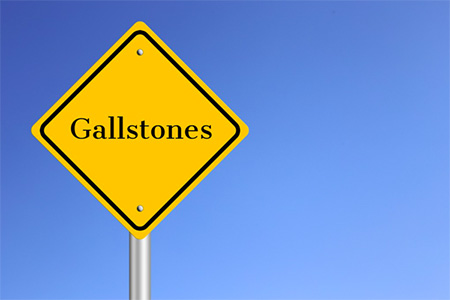 According to the National Institute of Diabetes and Digestive and Kidney Diseases, gallstones are very common, affecting 10 to 15 percent of the U.S. population, which is almost 25 million people.1
According to the National Institute of Diabetes and Digestive and Kidney Diseases, gallstones are very common, affecting 10 to 15 percent of the U.S. population, which is almost 25 million people.1
Your gallbladder is a small, pear-shaped organ that is located in the upper right of your abdomen just below your liver. The liver produces bile, which the gallbladder then stores until it is needed. When you eat, your body signals the gallbladder, and the stored bile is released through bile ducts to aid in digestion.
Gallstones are hardened deposits of digestive fluid that form in the gallbladder, usually made up of excess cholesterol or bilirubin. These hardened deposits can range from the size of a grain of sand to the size of a golf ball. There can be one or many gallstones located in the gallbladder at one time.
The presence of gallstones doesn’t guarantee you will have any signs or symptoms. In fact, many people don’t even know they have gallstones. Signs and symptoms occur only when gallstones block the bile ducts.
The most common signs and symptoms of gallstones include:
- Sudden, intensifying pain in the upper right abdomen or in the center abdomen just below the breastbone
- Nausea or vomiting
- The presence of a fever and chills
- Yellowing of the skin or whites of the eyes
- Pain that lasts for a few minutes to a few hours
- Pain that is so intense you can’t sit still or get comfortable in any position.
Many people with gallstones will never need treatment. However, if you are experiencing any of these symptoms, you should make an appointment with Dr. Ahmad right away. We can determine what treatment is indicated based on your symptoms and testing. If these symptoms are acute, you should seek immediate care.
Gallstones are a common occurrence and your body will let you know if it needs treatment. Listen to your body and pay attention to the warning signs and symptoms of gallstones.
Dr. Arif Ahmad specializes in laparoscopic robotic surgery and has performed over 2,000 laparoscopic robotic surgeries including surgery for diverticulitis. He is renowned in the Long Island area for his impeccable track record of safety and success.
1https://www.niddk.nih.gov/health-information/digestive-diseases/gallstones/definition-facts









